Gem Fossicking: Recreational Mining in Australia
December 16, 2016
INTRODUCTION
Amateur prospecting and mining by nonprofessionals, primarily for enjoyment, is known as fossicking. The target material can be anything, but precious metals and minerals are the most popular. Fossicking originated in the early 1850s during the Australian gold rush in New South Wales and Victoria. The term fossicking is said to come from the Cornish language and is widely used in Australia, New Zealand, and nearby islands.
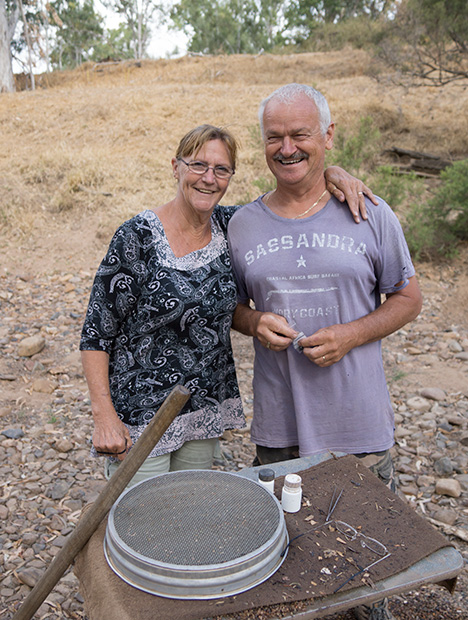
in central Queensland, Australia. They enjoy the relaxed lifestyle and the gemstones they
discover. Photo by Vincent Pardieu/GIA.
In the early days, when large-scale mechanized mining was not as popular and living conditions not as good, there was not much difference between fossicking and mining. The introduction of modern technology freed many people from labor-intensive jobs, and their new jobs offered more discretionary income. Traveling for fun became possible. Fossicking is a unique recreational activity loved by travelers in countries rich in natural resources, such as Australia, and it inspires visitors from outside Australia as well.
WHERE AND HOW TO FOSSICK
Fossicking is a very promising activity: an opportunity to have quality family time and possibly recover some treasure. All states except New South Wales require fossickers to buy a license before working in the field. At almost every mining site we visited in Australia, we encountered fossickers who really enjoyed their treasure-hunting trips in the outback. Many of them come back to the same place year after year to try out their luck. Fossickers can purchase licenses either in local visitor centers or online. The cost is around Aus$10–20 for a year, for either an individual or a family.
Each state’s Mineral Resources Development Act declares certain areas official fossicking areas; therefore no prospecting and mining licenses are issued there for businesses or corporations. The authors were amazed by the harmony between the miners and fossickers in areas where fossicking zones are right next to mining claims. To help people locate their targets, many private and government websites provide maps and detailed guidance. Local mineral and gem clubs also host events as a platform for fossickers to communicate and possibly exchange items. When exceptional stones are recovered and words get out, this can drive more people to dig in certain locations.
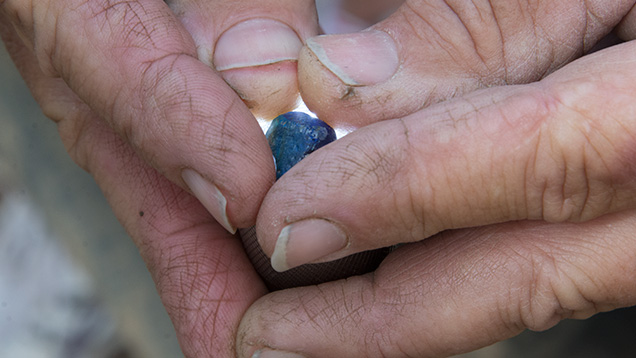
In northeast Tasmania, GIA field gemologists led by Vincent Pardieu regularly practice sapphire fossicking in rivers near Weldborough with the help of Chris Hood, a local jeweler addicted to fossicking. This activity is a great way to check their understanding of alluvial sapphire deposits hands-on, and they have added samples they mined to the GIA reference collection. The Weld River area has extensive alluvial deposits of corundum, topaz, chrysoberyl, zircon, and more. These deposits were intensively worked for tin until the 1890s. The Weld River is just one of ten officially designated fossicking areas on the island of Tasmania.
Although some may think that fossicking is done only by hand, practical tools can be easily purchased or made to facilitate the work. In Australia these tools are allowed as long as there is no engine. Since most deposits dug by fossickers are secondary, a handy washing tool known as the “Willoughby” and a sifting-and-sorting table are some of the must-haves. The Willoughby, quite common in Australia, has the potential to be very helpful for artisanal miners in Africa. The tool’s design saves water and is very easy to maneuver. One man can easily transport and operate it. Compared to the simple tools used in Africa, the Willoughby is much more efficient.
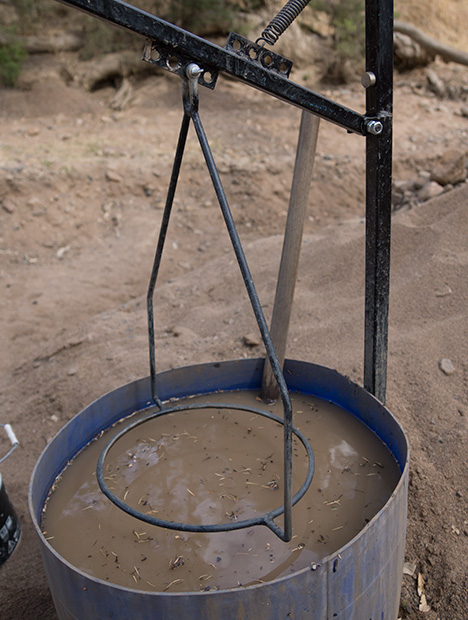
saves water. A spring connects the handle to the vertical stand. The pan containing the
sifted material is placed on the round metal support. Fossickers just need to shake the
handle to wash the material. Water in the container can be reused in the field. Photo by
Vincent Pardieu/GIA.
Following maps is a good way to get started to find the gem-bearing gravels, but conversations with the locals and fossickers with more experience in certain areas are always helpful. Before getting started, reading some basics about gemstones can help a fossicker identify the stones and avoid missing important discoveries.
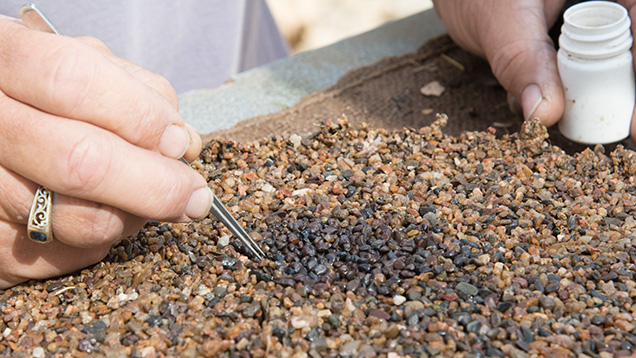
It is also important for potential fossickers to know relevant laws and regulations before taking any trips. The rules may vary by state. It may be challenging to obtain permits from a landowner in an area not designated for fossicking. The ownership of gems found can also be a sensitive topic; therefore it should be dealt with beforehand. There is also a limit to the amount of materials that fossickers can take home. Violating the rules can result in a fine.
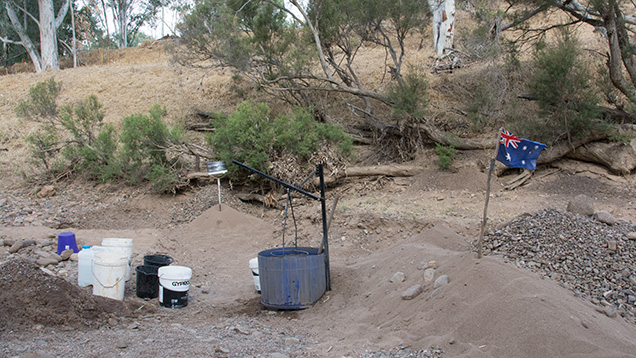
FOSSICKING ECONOMY
Gemstones like opal and sapphire can be pillars of the local economies of many outback mining towns, and fossicking tourism has an equally important role. In the towns of Inverell in New South Wales and Rubyvale in central Queensland, we witnessed how sapphire fossicking stimulates the economy. Hotels, restaurants, caravan parks, and even jewelry shops are some of the most prosperous businesses here. Fossicking maps are provided free of charge at local accommodations, and tours can be easily arranged. Fossicking is easy and convenient even for those tourists who do not originally plan on it.
In Australia many tourists travel in caravans, synonymous with recreational trailers in the United States. In these mining towns there are usually multiple caravan parks, with some near fossicking areas for easy access. Local jewelry businesses also rely heavily on tourists, including fossickers.
Dr. Tao Hsu is technical editor of Gems & Gemology; Andrew Lucas is manager of field gemology for education at GIA Carlsbad; Vincent Pardieu is senior manager of field gemology at GIA Bangkok.
DISCLAIMER
GIA staff often visit mines, manufacturers, retailers and others in the gem and jewelry industry for research purposes and to gain insight into the marketplace. GIA appreciates the access and information provided during these visits. These visits and any resulting articles or publications should not be taken or used as an endorsement.
The authors would love to thank Mr. Terry Coldham for the opportunity to visit some of the most important mining areas on Australia’s east coast.

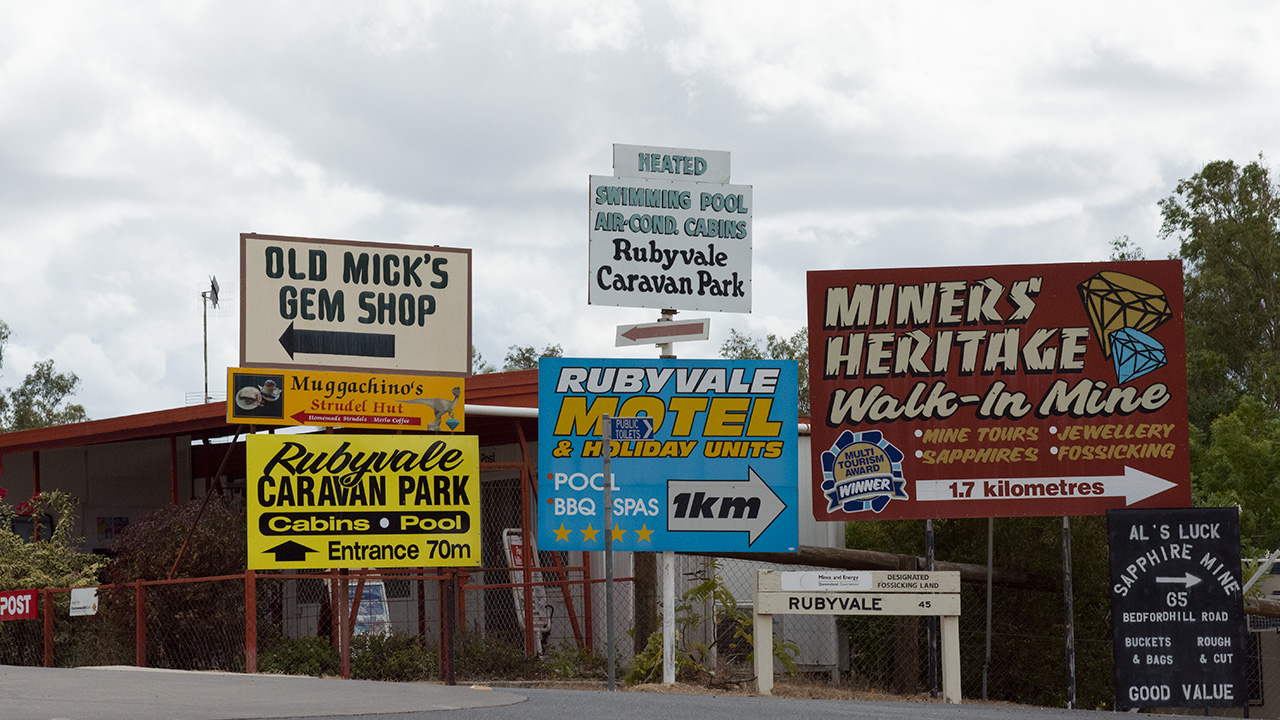
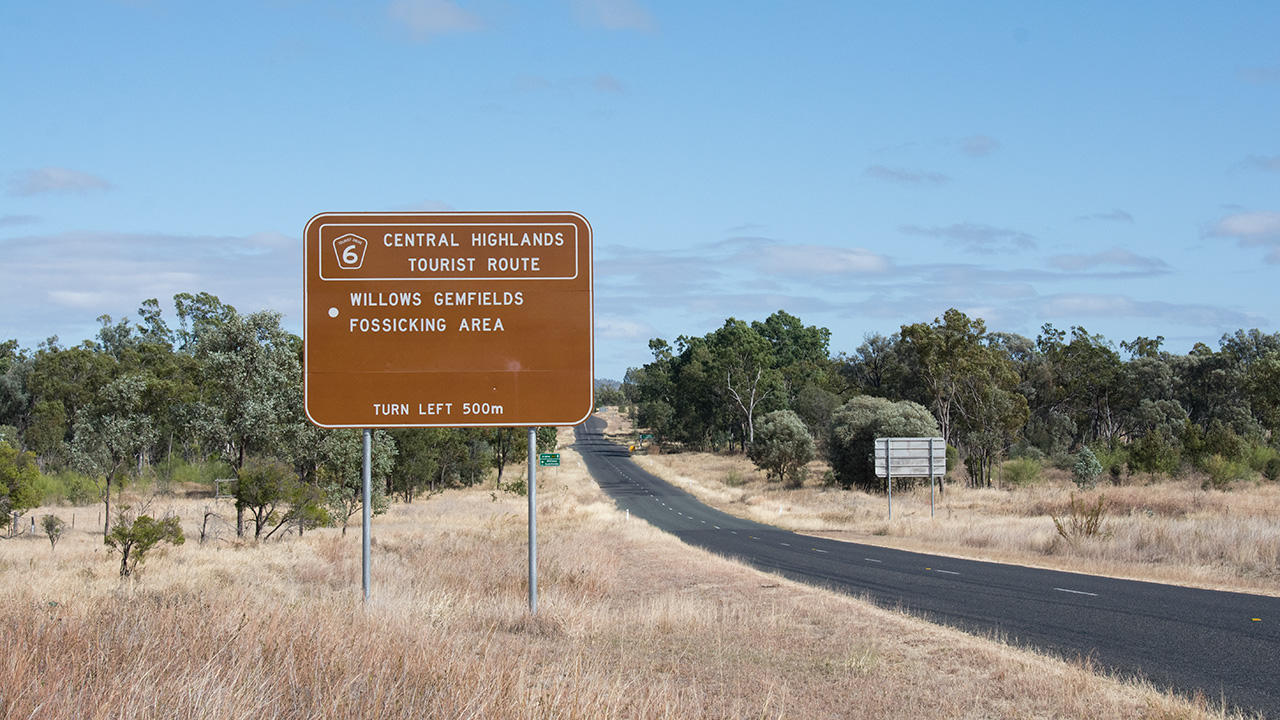

.jpg)


